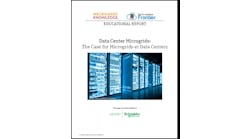Australia’s Western Power plans to seek expressions of interest in December to build what may be Australia’s largest renewable microgrid.
The utility intends to install a $10 million microgrid to bolster a failure-prone line between Western Australia’s seaside resort community Kalbarri and Geraldton.
Wind-born marine salts pummel the remote line causing frequent failures along its 90-mile expanse. Kalbarri experienced 19 significant outages between November 2014 and November 2015. Some lasted more than two days.
“In the event of an outage on the main feeder line that supplies electricity to Kalbarri from Geraldton, the microgrid will ensure the Kalbarri community will still have power until the fault is corrected,” said Mike Nahan, energy minister for Western Australia.
The grid-connected microgrid would use its 5 MW of peak generation and 2 MWh of battery storage to serve Kalbarri and channel excess power back to Geraldton.
Private companies will supply the microgrid’s generation. In selecting resources, Western Power intends to consider all generation options and take into account a community push for renewable energy. The utility envisions its role as being the manager of the microgrid.
The project already has a start with Kalbarri’s 1.6 MW windfarm owned by Synergy. Western Power last month released a feasibility study that modeled microgrid controllers incorporating the windfarm, solar PV, solar-thermal and large-scale energy storage. The utility ran 12,500 computer simulations to test the viability and technical requirements of the project.
The wind farm, alone, meets more than 50 percent of Kalbarri’s load more than 30 percent of the time, according to the study. However, because it lacks a microgrid, so cannot island, the wind farm currently supplies no power to the community when the feeder line fails.
Australia’s largest renewable microgrid precursor to grid-of-microgrids?
Current thinking suggests the Western Power network is likely to evolve into a modular network of dynamically connected microgrids as distributed generation displaces centralized generation over a period of many years, according to the feasibility study.
“While not a typical approach to reliability improvement, the Kalbarri microgrid project may represent a gate-way project that demonstrates the efficiency and efficacy of microgrid projects into the future,” the study said.
As potentially Australia’s largest renewable microgrid, the project offers a demonstration that other Western Australian communities may model, according to Nahan.
“This is a game changer for regional communities who rely on power from a long feeder line, which is subject to environmental factors that can cause outages,” he said.
Nahan said that the government has committed to getting the microgrid up and running as quickly as possible. Western Power expects to have contracts in place and the project underway by 2017.
Another project under development by Horizon Power has laid claim to the title of largest distributed energy microgrid in Australia. Planned for Onslow, another coastal town in Western Australia, it relies on a mixture of natural gas and renewable resources.
Track the news about Australia’s largest microgrid. Subscribe to the Microgrid Knowledge newsletter. It’s free.






